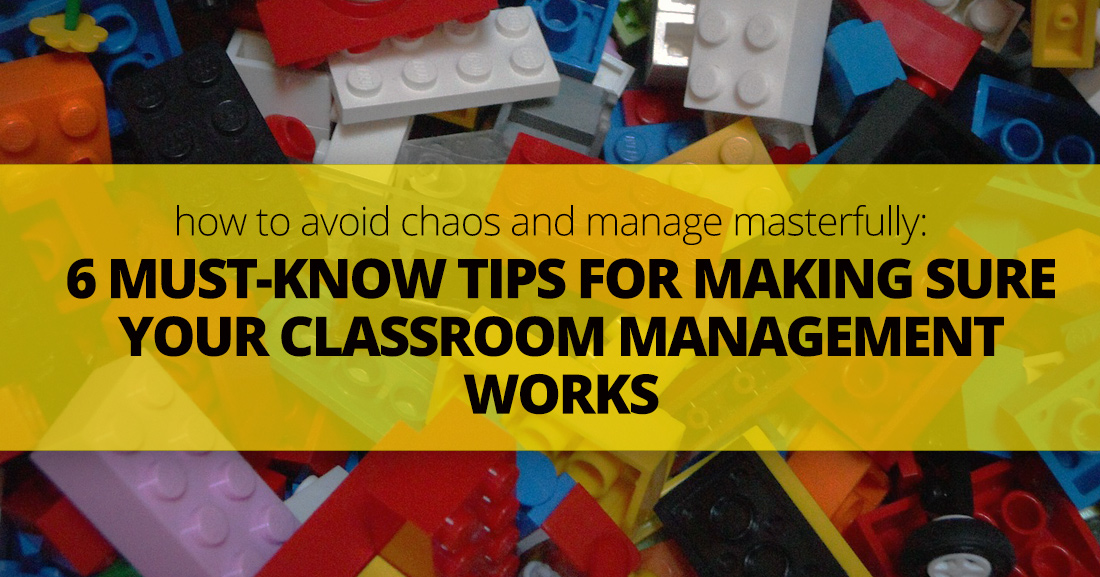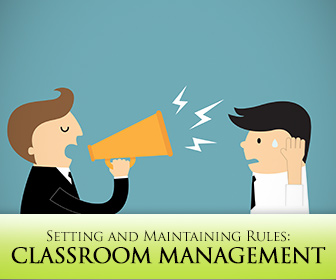How to Avoid Chaos and Manage Like a Boss: 6 Must-Know Tips for Making Sure Your Classroom Management Works


The first, most important, golden rule?
Don't make the assumption that the previous teacher had laid down the rules, or that the students will innately have an awareness of what you want. Each individual teacher will have different expectations and thresholds, what one person will accept as perfectly fine behaviour another will be kicking the kid out the door for. There will be a whole load of fresh TEFL teachers starting in Thailand right now, midway through the academic year, but don't think that you don't have the time to do a basic rules and introductions lesson. One hour spent being clear about the rules of your classroom and you will save the hours that mount up curbing bad behaviour throughout the year.
It doesn’t have to be a case of standing at the front of the class lecturing, “DO NOT DO THIS, DO NOT DO THAT!”; if anything I’m sure that would just make the students want to push the boundaries and break the rules. It’s like showing them a big red button with DO NOT TOUCH.
I have always found, in the classroom and the wider field of youth work, that the best starting point is to ask for suggestions from the group. Then you can fill in any gaps (it’s always good to have previously drawn up your own rules that you eventually want the group to agree on – this way it just feels as if the rules have come from the group rather than dictated by the teacher – manipulative? Yes, and why not?). It’s also miles more beneficial to work towards expected behaviour (what we should do in the classroom) rather than unwanted behaviour. This can be tricky for the learners to get their heads around at first as they are so used to being told what not to do by parents, school and society. Also note the use of we – what we should do in the classroom – rather that you. This is a group situation not a dictatorship.
The way that you get the suggestions out of the students can vary from mind mapping on the board/big sheet of flipchart (I find that YES/NO on opposite ends helps as there will still be ‘no’ rules suggested) or you can create rules posters (you can designate a different rule to small groups within the class and display them around the room as a visual reminder). In the past with youth groups I used to have a set of laminated cards with examples of behaviours (written and pictures) that I would hold up, the young people running from one end of the room to the other to signify if it was a good or bad behaviour.
Once you have agreed on a set of behaviours that the whole class agree on, it is essential to follow this up with some simple consequences. There is little point in creating a set of rules if it’s not clear what happens if they are broken. In the youth groups, we used to have a traffic light system of three strikes before the young person was removed from the activity, but in the classroom I tend to read each situation individually. What I am clear about is lateness (some teachers will let students be up to 20 minutes late – my limit is lower than that but being in a Thai school, lateness becomes the norm!), and behaviour. Whether it is a verbal warning, or a name written on the board, I like to give a warning before any consequence takes place.
Again, it is worth asking the students what they think the consequences should be – you will often be surprised at how harsh they can be! Despite constantly pushing the boundaries, young people need and expect them to be in place. I’ve had young people in youth groups suggesting a lifetime ban for someone swearing – put forward by young people who are foul mouthed themselves! Obviously in the school setting, sometimes consequences are dictated to you, but in many TEFL placements this won’t be the case. Removing students from the classroom can help to remove the problem but it doesn't necessarily address it. Some people favour humiliation or chores such as cleaning the classroom, and of course in many countries outside of the western world the cane is still in use. Whatever you are comfortable with, communicate it with the students clearly and stick to it. There’s no use in empty threats – young minds can see right through that.
Despite my experience in setting out and agreeing on group rules/guidelines/agreed behaviours/whatever you want to call them, I am in no way trying to claim the prize of golden teacher of the year. I still have bad days, manic lessons and chaotic classes, but I always have that first lesson to refer back to (and now I have started getting photographic evidence even of the students signing the rules so I can remind them!) and although I am not a new teacher this semester and I don’t have any new classes, I am still going through the same process of re-establishing and fine tuning what we agreed on at the start of term. In a nutshell; be clear, take suggestions from the group, demonstrate consequences and remind them as you go along.
And then you'll have the perfect classroom with angelic students, right? Unfortunately not! But then – how boring would that be?
This is a guest article from Kylie Millar. For more teaching ideas and reflections on living and working as an ESL teacher in Thailand visit her personal blog; cornishkylie.wordpress.com